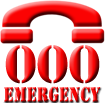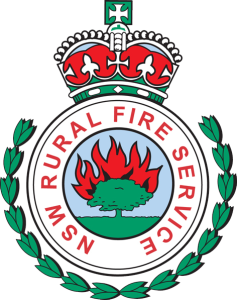Bush Fire Danger Period and Fire Permits
Some things to remember:
A Fire Permit is required for burning activities during the Bush Fire Danger Period in Rural Fire districts and at all times in Fire and Rescue districts around the state. Fire Permits help ensure fire is used safely and minimise the danger
to you, your property and the community. If you’re planning to burn on your property, you need to let us know before you light up. You can apply for a Fire Permit online at:
Fire Permit Application – NSW RURAL FIRE SERVICE (service-now.com)
Should you intend to conduct burns outside the bush fire danger period, you need to notify the RFS of a planned burn. If you’re planning to burn on your property, you need to let us know at least 24 hours before you light up. By providing
notification at least 24 hours in advance of your burns, you inform your neighbours and fire agencies of your intent to burn. This helps prevent unnecessary emergency calls and fire brigade responses. You also need to let your neighbours know at least 24 hours ahead. Notifications can only be made for periods of up to 21 days to ensure the information remains relevant and clear to us and your neighbours. Details and application here:
Notify us of your planned burn – NSW RURAL FIRE SERVICE (service-now.com)
What is a Fire Permit?
Fire Permits help ensure fire is used safely during the Bush Fire Danger Period. A permit imposes conditions on the way a fire is lit and maintained, and can only be issued by authorised Permit Issuing Officers.
The permit system ensures agencies like the NSW RFS know when and where landholders intend to burn, to ensure adequate and appropriate measures are in place, and so that fires remain under control.
To carry out a Bush Fire Hazard Reduction Burn, you may need:
- a Fire Permit and/or
- an Environmental Approval such as a Bush Fire Hazard Reduction Certificate.
You must gain this before applying for a Fire Permit.
The Permit Issuing Officer may add any conditions deemed as necessary but all permits have standard conditions that, such as:
- the permit is to be carried by the permit holder, on site, at the time the fire is lit
- the permit is to remain on site with those present until extinguished, if applicable
- the fire must be supervised at all times unless the permit says otherwise
- notifications are given to the NSW RFS, and adjoining neighbours at least 24 hours (unless specified otherwise) prior to the fire being lit and
- the permit may be varied, cancelled or suspended, depending on weather conditions.
When are permits required?
The statutory Bush Fire Danger Period runs from 1 October to 31 March, however it may vary due to local conditions. If you are planning to light a fire in the open during this time, you will need a Fire Permit.
You can find out if permits are required in your area below.
Also depending on the type of fire, a permit may be required all year round. For example, a Fire Permit is required at all times if a fire is likely to be dangerous to a building.
When are permits not required?
Fire Permits are not required for fires that are lit for the purpose of land clearance or the creation of a fire break during the Non Bush Fire Danger Period.
Additionally, Fire Permits are not required for fires for the purpose of cooking food, provided that:
- the fire is in a permanently constructed fireplace;
- at a site surrounded by ground that is cleared of all combustible materials for a distance of at least two metres all around;
- the fire is completely extinguished before leaving.
What do I need to do when using fire?
Before lighting the fire ensure that:
- it can be contained and controlled within the specified area
- it does not contain toxic materials, such as rubber tyres, plastics, paint etc; and
- it must not cause an air pollution problem by producing excessive amounts of smoke.
If you have a permit, it is your responsibility to:
- check whether a Total Fire Ban in force on our Fire Danger Ratings and Total Fire Ban page. If there is, your permit is automatically suspended.
- check whether a No Burn day has been declared on the EPA website
- check the expected weather conditions
- notify and check with your local NSW RFS Fire Control Centre or Fire and Rescue NSW station prior to lighting.
- follow any conditions restrictions listed in your permit.


